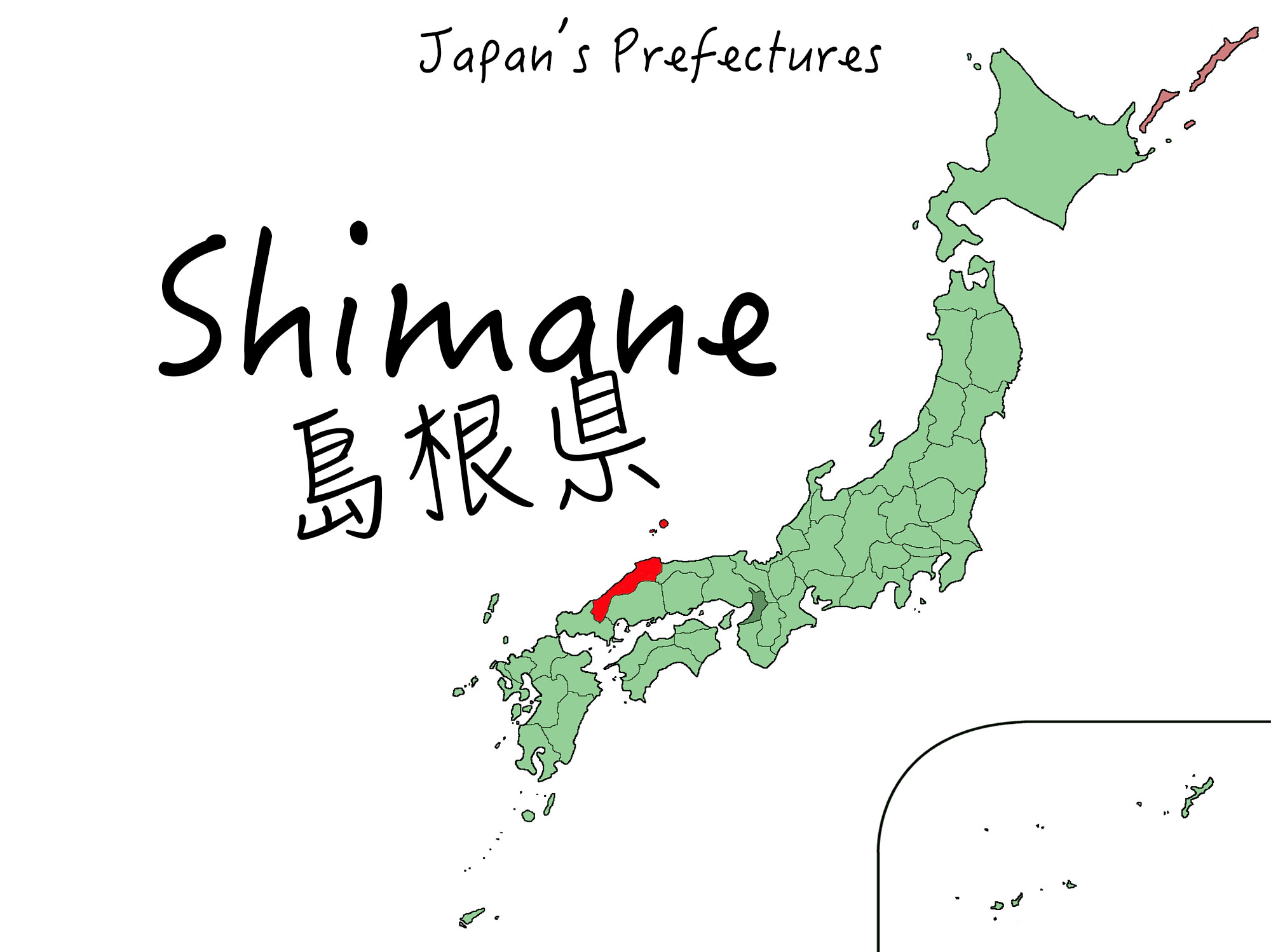
The first feature from the Chugoku Region is Shimane Prefecture! Located right next to Hiroshima, it includes a number of islands, a mountain range, two large lakes, and a number of national parks. Rice is produced in the mountainous areas, and seafood from the ocean. It’s not just nature though and the area has a long cultural history with Izumo Taisha, one of if not the the oldest Shinto shrines in Japan. It honours Okuninushi, one of the larger Shinto gods who is the ruler of the unseen world of spirits, nation-building and good relationships, he’s even credited with creating Japan before the gods descended from heaven.
To get there, you can use the JR shinkansen and and alight at either Matsue or Izumo (About 6-8 hours from Tokyo), or fly to Izumo airport, only 90 minutes from Haneda airport. Once you’re there, you have access to great public transport systems and ferries to get out to the islands too.
The capital city, Matsue, is the smallest out of all the capitals in Japan, but don’t let this sleepy town pass you by. Here are some great things to eat in Shimane:
Tea Ceremony and Japanese Sweets
Kyoto isn’t the only good place for tea and desserts, Shimane Prefecture also has a reputation for cranking out the good stuff. Saiun-do is a famous wagashi traditional sweets store (and once a month they teach lessons as well) where you can get the older style of sweets which are a bit harder to find. You can also visit a number of tea shops to taste matcha and try your hand at making your own matcha tea. It’s a little more accessible than in Kyoto or Tokyo because it’s the tea of choice around Shimane.

Izumo Soba/Warigo Soba
If you order soba, it might be served in three portions. The soba is topped with seaweed, carrot, spring onions, and a number of other possibilities and there’s a soup on the side. You’re supposed to eat this dish by pouring the soup over the noodles and slurping, but why is it in three portions? As you eat each portion, you should focus on a different element of the dish. The noodles themselves and their taste and texture, the soup, or the fragrance of the two mixed together. All three portions are exactly the same, but as you move on to a different bowl your mind should move on to a different element too.

Seafood
As a coastal and island Prefecture, Shimane has its share of seafood specialties. In particular, clams, snow crab and sea bream. The clams are often used in soups (and a burger) while the crab is eaten in a number of ways and the bream is eaten with rice. Speaking of…
Rice
Shimane Prefecture’s mountainous regions are ripe for rice production, a famous brand is Kinu-Musume which is described as silky, glossy, and a little sweet. From rice we get…
Sake
Shimane Prefecture is said to be the birth place of sake and they even have a shrine dedicated to sake. Japanese folklore says that after the annual meeting of Shinto gods, a number of them stayed behind and drank sake together, and on that site now stands Saka Shrine – the only shrine to have a brewery attached to it! There’s also a story where one of the Japanese deities uses sake to intoxicate a mythical beast before slaying it, so Shimane’s historical connections continue all the way through its cuisine.
Some notable sake brands are Rihaku and Yoneda Brewery.
https://www.youtube.com/watch?v=59EWldoYjSo